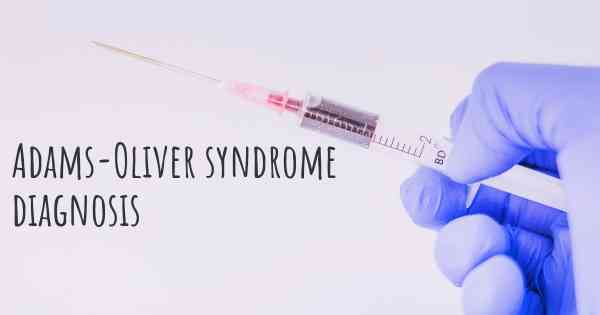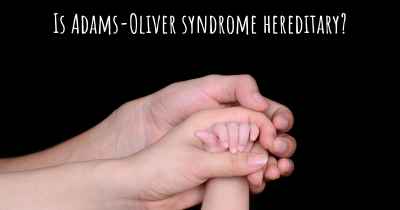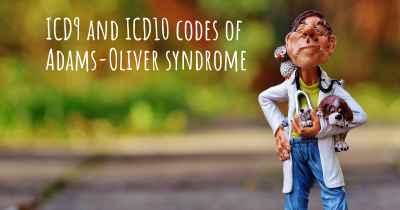How is Adams-Oliver syndrome diagnosed?
See how Adams-Oliver syndrome is diagnosed. Which specialists are essential to meet, what tests are needed and other useful information for the diagnosis of Adams-Oliver syndrome

Adams-Oliver syndrome (AOS) is a rare genetic disorder characterized by the presence of certain physical abnormalities, primarily affecting the skin and limbs. Diagnosing AOS involves a comprehensive evaluation of the individual's medical history, clinical examination, and various diagnostic tests.
Medical History
The first step in diagnosing Adams-Oliver syndrome is obtaining a detailed medical history of the patient. The healthcare provider will inquire about the individual's symptoms, family history, and any previous diagnoses or treatments. It is crucial to identify any patterns of AOS within the family, as this condition can be inherited in an autosomal dominant or autosomal recessive manner.
Clinical Examination
During the clinical examination, the healthcare provider will carefully assess the patient's physical features and look for characteristic signs of Adams-Oliver syndrome. The most notable features include:
- Scalp Defects: AOS often presents with scalp aplasia cutis congenita, which is the absence of skin on the scalp at birth. This defect may vary in size and location.
- Limb Abnormalities: Individuals with AOS may have malformations or absence of fingers, toes, or even entire limbs. These limb defects can be unilateral or bilateral.
- Cardiovascular Anomalies: Some patients with AOS may exhibit structural abnormalities in their heart, such as ventricular septal defects or abnormalities of the blood vessels.
- Other Skin Manifestations: Additional skin abnormalities commonly seen in AOS include cutis marmorata (a mottled appearance of the skin), cutis aplasia (absence of skin in localized areas), or cutis gyrata (thickened and grooved skin).
Diagnostic Tests
While the clinical examination provides valuable insights, specific diagnostic tests are necessary to confirm the diagnosis of Adams-Oliver syndrome. These tests may include:
- Genetic Testing: AOS is primarily caused by mutations in the ARHGAP31 or DOCK6 genes. Genetic testing can identify these mutations and help confirm the diagnosis. It can also be used for prenatal testing in families with a known history of AOS.
- Imaging Studies: X-rays, ultrasound, or other imaging techniques may be employed to evaluate the extent of limb abnormalities or to assess for associated cardiovascular anomalies.
- Cardiac Evaluation: Given the potential cardiovascular involvement in AOS, an echocardiogram or other cardiac tests may be performed to assess the structure and function of the heart.
- Biopsy: In some cases, a skin biopsy may be conducted to examine the histopathological features of the affected skin and rule out other conditions.
Consultation with Specialists
Due to the multisystem nature of Adams-Oliver syndrome, it is often beneficial to involve various medical specialists in the diagnostic process. These may include dermatologists, geneticists, cardiologists, orthopedic surgeons, and other relevant healthcare professionals. Their expertise can contribute to a more accurate diagnosis and comprehensive management plan.
Conclusion
Diagnosing Adams-Oliver syndrome requires a combination of medical history assessment, clinical examination, and specialized diagnostic tests. Identifying the characteristic physical features, conducting genetic testing, and evaluating associated abnormalities are crucial steps in confirming the diagnosis. Consulting with a team of specialists can further enhance the diagnostic process and ensure appropriate management strategies are implemented.
Posted May 10, 2017 by Garrett 1000
Posted Aug 16, 2019 by Amanda 3000
We can now do genetic testing to confirm a diagnosis of AOS. There are currently 6 known genes, but these only account for less than half of people with the disease. So if a genetic test is negative, this does not necessarily exclude a diagnosis of AOS.
Posted Feb 6, 2020 by Laura 650
Exome sequencing or panel testing the known AOS genes (RBPJ etc)
Posted Mar 4, 2022 by Trudy, Steph's mum 2650








